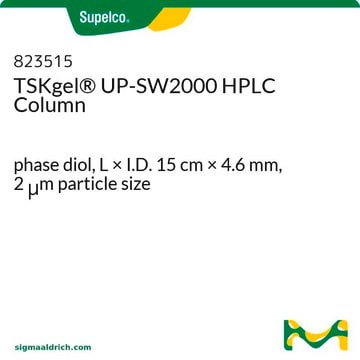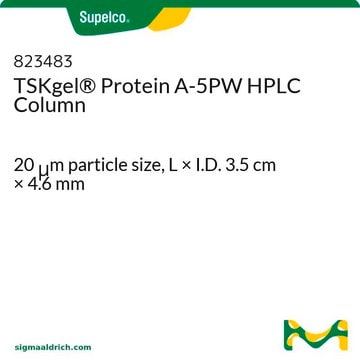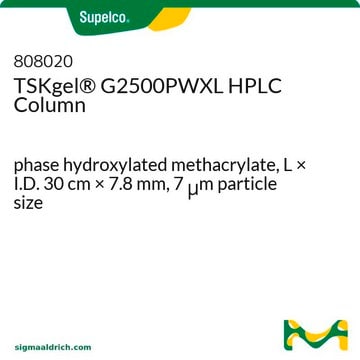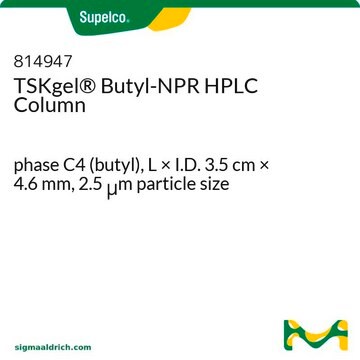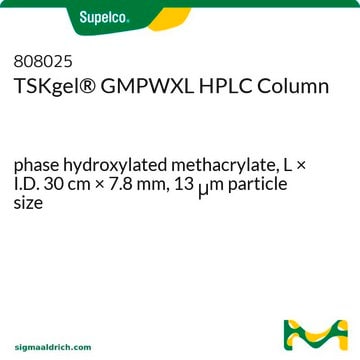823514
TSKgel® UP-SW2000 (2 µm) HPLC Columns
L x I.D. 30 cm × 4.6 mm, diol phase
Synonim(y):
TSKgel® UP-SW2000
About This Item
Polecane produkty
product name
TSKgel® UP-SW2000 HPLC Column, phase diol, L × I.D. 30 cm × 4.6 mm, 2 μm particle size
Materiały
stainless steel hardware
agency
suitable for USP L20
linia produktu
TSKgel®
producent / nazwa handlowa
Tosoh 23514
metody
UHPLC: suitable
dł. × śr. wewn.
30 cm × 4.6 mm
macierz
silica particle platform
grupa aktywna macierzy
diol phase
wielkość cząstki
2 μm
operating pH range
2.5-7.5
metoda separacji
size exclusion (SEC)
Szukasz podobnych produktów? Odwiedź Przewodnik dotyczący porównywania produktów
Opis ogólny
TSKgel UP-SW2000 columns feature the same pore size as the well-established TSKgel SuperSW2000 columns. Hence methods developed using TSKgel SuperSW2000 columns can easily be transferred to TSKgel UP-SW2000 columns on conventional HPLC systems as well as on UHPLC systems.
TSKgel UP-SW2000 columns offer higher resolution, improved peak shape and increased efficiency yielding methods that are robust, reproducible and easily transferrable between UHPLC and HPLC systems.
TSKgel UP-SW2000 columns offer superior reproducibility injection-to-injection, from column-to-column within the same lot and from lot-to-lot. %RSD values for peak parameters including retention times, area peak height, peak asymmetry, and theoretical plate count demonstrate the exceptional reproducibility of these columns.
Informacje prawne
Choose from one of the most recent versions:
Certyfikaty analizy (CoA)
Sorry, we don't have COAs for this product available online at this time.
If you need assistance, please contact Obsługa Klienta
Masz już ten produkt?
Dokumenty związane z niedawno zakupionymi produktami zostały zamieszczone w Bibliotece dokumentów.
Produkty
Separation and identification of oligonucleotides differing by one base in length using Size Exclusion Chromatography combined with multi-angle light scattering (SEC-MALS) detector.
Nasz zespół naukowców ma doświadczenie we wszystkich obszarach badań, w tym w naukach przyrodniczych, materiałoznawstwie, syntezie chemicznej, chromatografii, analityce i wielu innych dziedzinach.
Skontaktuj się z zespołem ds. pomocy technicznej
